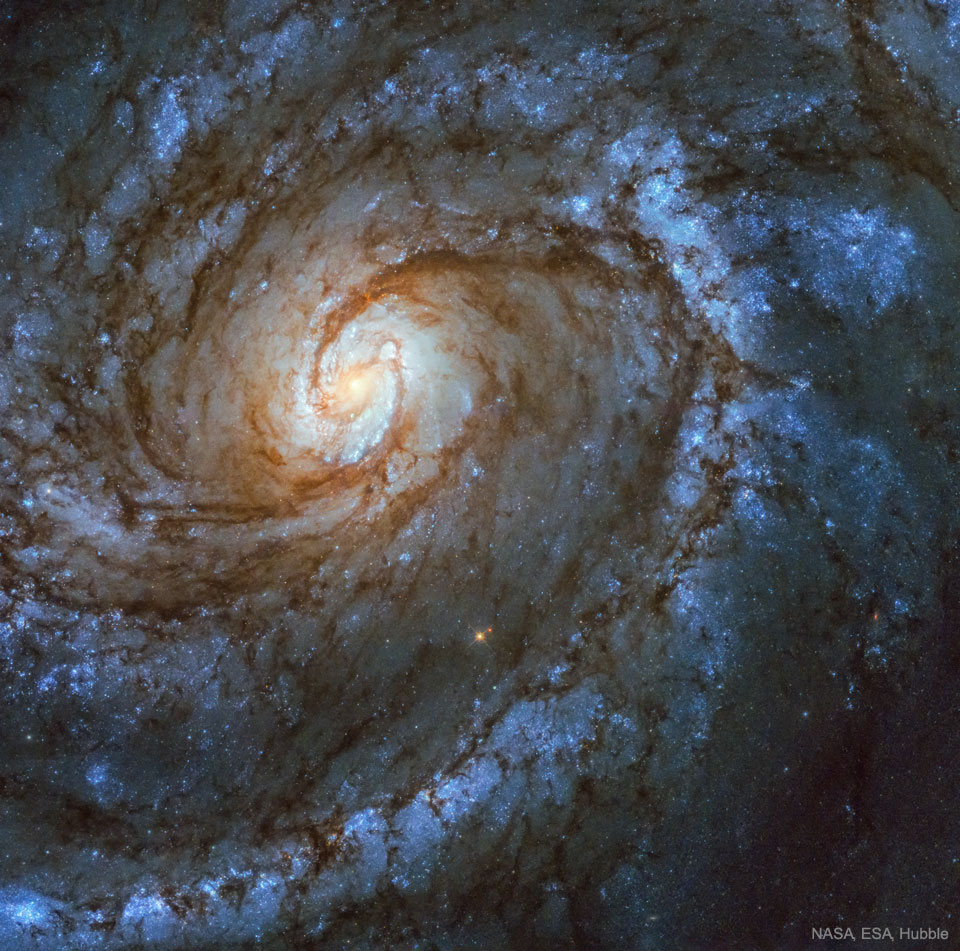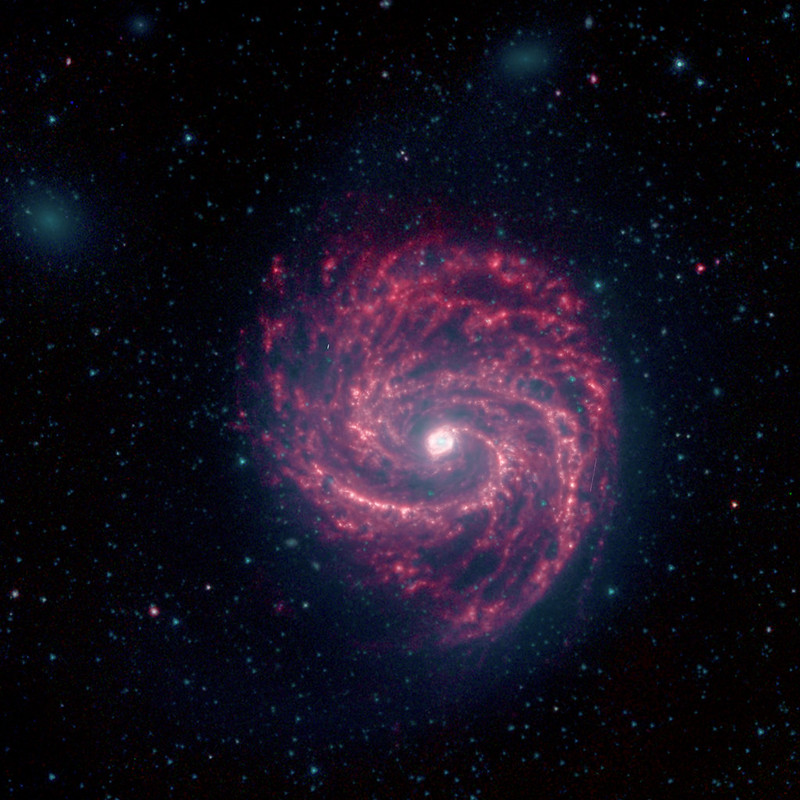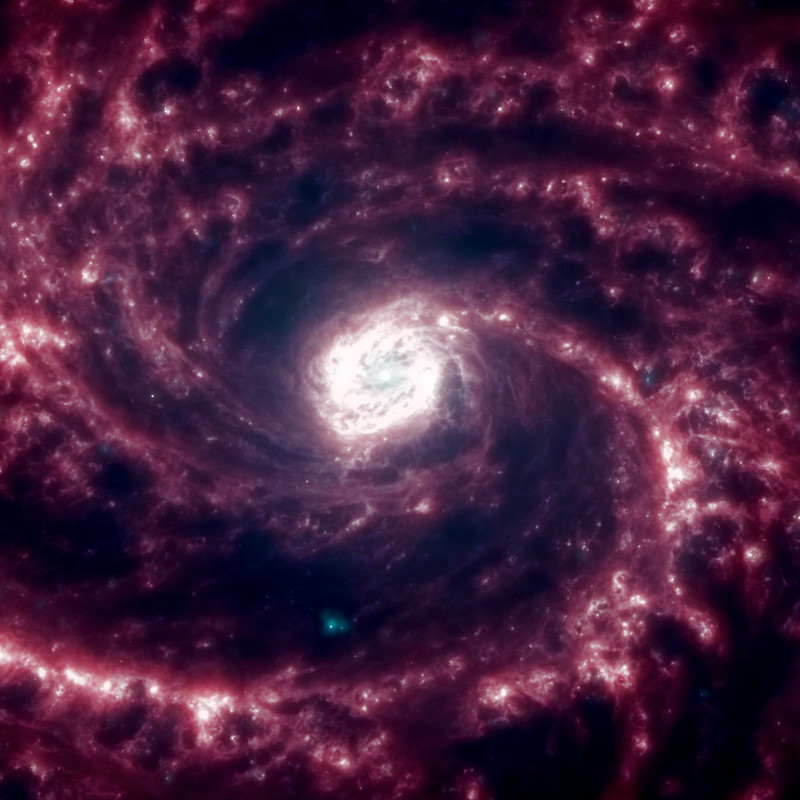Hooray! One of my favorite galaxies is the subject of today's APOD.
I have a particularly soft spot for M100 for two reasons. First, because M100 was the galaxy that Hubble photographed back in December 1993 to show us its improved vision after it had been fitted with "glasses":
hubblesite wrote:
This comparison image of the core of the galaxy M100 shows the dramatic improvement in Hubble Space Telescope's view of the universe. The new image was taken with the second generation Wide Field and Planetary Camera (WFPC-2) which was installed during the STS-61 Hubble Servicing Mission. The picture beautifully demonstrates that the corrective optics incorporated within the WFPC-2 compensate fully for optical aberration in Hubble's primary mirror. The new camera will allow Hubble to probe the universe with unprecedented clarity and sensitivity, and to fulfill many of the most important scientific objectives for which the telescope was originally built.
The second reason why I love M100 is this picture from my trusted old Color Atlas of Galaxies by James D Wray, from 1988:
M100 with supernova SN 1979C from The Color Atlas of Galaxies.
The supernova is the bright blob at lower right.
Credit: James D. Wray.
I really apologize for the lousy picture, because I had to photograph the not very sharply detailed image by James D Wray directly from his atlas with my mobile camera. (And I haven't figured out how to crop images that I take with my mobile phone.)
But seriously, people, this might be the only picture in existence of Supernova 1979C, which was a remarkably bright supernova back in 1979. Consider this: Seven (7) supernovas have been detected in M100 since 1901, and SN 1979C was
three magnitudes brighter than any of the other six! SN 1979C was mighty! It was superb!

The
Wikipedia article on M100 lists all the seven supernovas, but it fails to mention the peak brightness of SN 1979C! Instead it talks about SN 1979C as if it faded too quickly for us to know much about it!

But the peak apparent magnitude of SN 1979C is mentioned in the
Wikipedia article on the supernova itself!!
And to think that James D. Wray managed to photograph this supernova when he was photographing galaxies for his atlas!!!


Ann
 M100: A Grand Design Spiral Galaxy
M100: A Grand Design Spiral Galaxy





